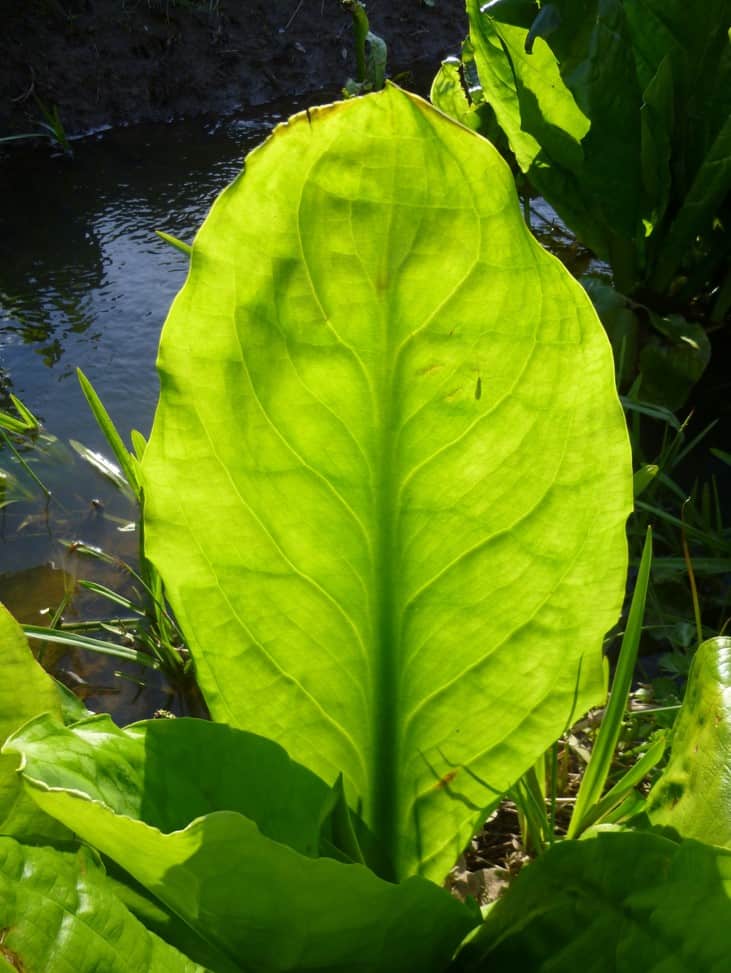In the short time that ‘Vegetative Key’ has been available it has been taken to heart by botanists and ecologists alike as it enables them to make accurate identifications and effectively extends the botanical field season.
In many books and courses, the focus of plant identification is on flowers, with foliage almost an afterthought. This has changed with the new Vegetative Key to the British Flora by John Poland in 2010 (and the revised and updated 2nd edition in 2020), which relies on using vegetative characters for identification. Not only is the key impressive in its coverage of plants (both native and non-native), but also in the speed at which identifications can be made.
The ability to accurately identify plants is a skill that can be employed (and enjoyed) by a wide variety of people, from those with an interest in their local flora, foragers, to professionals wanting to assess the value of habitats for conservation, development and land management. Focusing on practical skills, with the group and individual keying out both in the classroom and field, this course is ideal for amateur or professional botanists/ecologists both in the voluntary or ecological sector. This course is aimed at all of these people, and helps guide you through what may at times seem like a daunting amount of botanical terminology (how familiar are you with the terms: compound, medifixed hairs and cordate for instance?). Through a mixture of presentations, practicals, group and individual work using the key, you will become familiar with these terms and by the end of the course will have become more confident (and competent) in your ability to use the ‘Vegetative Key’ to identify a variety of different wildflowers.
By the end of the course participants will have:
- An understanding of what vegetative features are important in identification.
- A chance to have observed many of the botanical features used in the ‘Vegetative Key’, including the diversity of hair types that are used as key identification features for some groups.
- An ability to use the ‘Vegetative Key’ to identify many of the species you may come across.
- An awareness of the limitations of the ‘Vegetative Key’ for some particular genera/species groups.
We anticipate that this course will run with between 8 and 16 participants.
This course is classroom-based, but with the potential for short excursions into the grounds of the Field Centre.
If you are 18-25, you can get £50 off this course thanks to the Generation Green project. Click here to find out more and to get your voucher code
Tutor: Mark Duffell
Mark Duffell has had a lifetime interest in plants, gaining the RHS Diploma in Horticulture and completing an MSc in Biological Recording. He now runs Arvensis Ecology, splitting his time between conducting botanical surveys and teaching botanical identification and survey techniques to undergraduate and postgraduate students, consultancies and environmental organisations.Please note, the fee is for tuition and refreshments only.
If you would like to book accommodation, lunch and an evening meal at FSC Preston Montford, please email [email protected].
Example Timetable
Please arrive at the Centre in good time prior to the 10.00am start time. The course will run all day and finish around 17:00pm.
Morning:
Presentation and workshop on naming of vegetative plant parts and how to go about identifying plants using ‘Vegetative Key’.
Afternoon:
Looking at specimens and keying them out (indoors/outdoors).
Lunch break and breaks as required.
What's Included
Bursaries and Subsidies
If you are 18-25, you can get £50 off this course thanks to the Generation Green project. Click here to find out more and to get your voucher code
Before You Attend
What to Bring
- x10 and/or x20 hand lens*.
- The Vegetative Key to the British Flora. 2010. Poland, J. & Clement, E.J. BSBI.
- The Vegetative Key to the British Flora. 2020. 2nd edition. Poland, J. & Clement, E.J. BSBI.*
- Notepad and pen.
-
* hand lens and copies will be available to borrow from the Centre.
Sorry this course has ended

